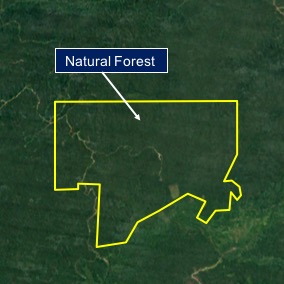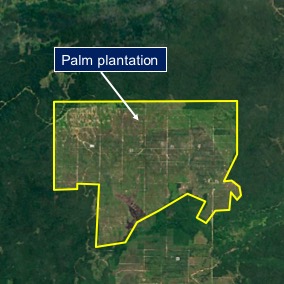Detailed Analysis of Oil Palm Plantations
GRAS proves the compliance of a plantation with zero-deforestation commitments
To qualify for the export of palm oil to the European biofuel market, oil palm production companies need to fulfill strict sustainability criteria, such as no-deforestation and the protection of high biodiverse areas. GRAS allows to securely and efficiently prove respective compliance.
GRAS determines the exact time and type of a potential land use and land use change within a plantation or concession area. High resolution satellite images are processed and sound time series of the Enhanced Vegetation Index (EVI) are evaluated. Therefore, GRAS offers a cost-efficient and reliable solution to detect land use change activities and proof compliance of sustainability requirements. The results can be used to prepare for certification processes or to support future investment decisions.
The GRAS approach for a detailed analysis on plantation level
A detailed analysis on plantation or field level is usually conducted for specific outlines, that are provided by the plantation owners, companies, certification systems or others. Depending on the case-specific needs, the criteria for the detailed analysis are defined and the production area is analysed. For the land use change analysis, one or multiple cut-off-dates can be adjusted, carbon stock estimations and emission calculations can be included and distance to protected areas can be measured, to mention some commonly used examples.
Analysis results can be used for internal risk management and external communication
GRAS provides all analysis results in a concise and comprehensive summary report. Additionally, an interactive tool can be set-up to facilitate an efficient internal management of the production area, smoothly incorporate the results into internal work flows and databases or to provide sustainability compliance to the public in an easy-to-use and secure online tool.
Find out more about how GRAS supports the implementation and verification of sustainability and zero-deforestation supply chains here.

The image from 2009 clearly shows a forest cover within the plantation outline

In 2015, a plantation structure is visible, which proves an in-compliance with the no-deforestation commitment